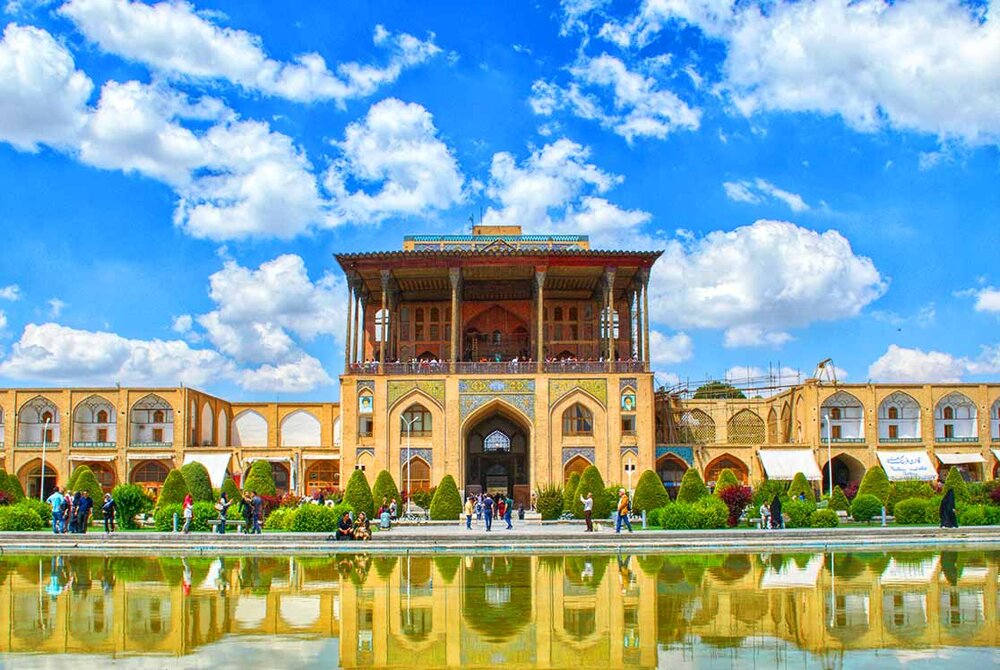Staircase of majestic Ali Qapu undergoes restoration

TEHRAN – A restoration project has recently been commenced on the staircase of the 17th-century Ali Qapu Palace, an element of the UNESCO-registered Imam Square in Isfahan province, the provincial tourism chief has announced.
The project involves cleaning the stair decorations physically and chemically, strengthening the gypsum and paint layers, and restoring surfaces damaged by memorabilia, Alireza Izadi said on Sunday.
“Aside from balancing the colored surfaces of fresco decorations, the project also involves stabilizing these surfaces,” the official added.
The project is being carried out by experienced restorers under the supervision of cultural heritage experts, he noted.
Best known as Naghsh-e Jahan Sq. (literary meaning “Image of the World”), the property is hemmed on four sides by magnificent buildings: to the east, the Sheikh Lotfollah Mosque; to the west, the palace of Ali Qapu; to the north, the portico of Qeyssariyeh; and to the south, the eminent the Imam Mosque.
Soaked in a rich history and culture, Isfahan was once a crossroads of international trade and diplomacy in Iran. Now, it is one of Iran’s top tourist destinations for good reasons. The ancient city is filled with many architectural wonders such as unmatched Islamic buildings, bazaars, museums, Persian gardens, and tree-lined boulevards. It’s a city for walking, getting lost in its mazing bazaars, dozing in beautiful gardens, and meeting people.
The city has long been nicknamed as Nesf-e-Jahan which is translated into “half the world”; meaning seeing it is relevant to see the whole world. In its heyday, it was also one of the largest cities in the region with a population of nearly one million.
Isfahan is renowned not only for the abundance of great historical bridges but also for its ‘life-giving river’, the Zayandeh-Rood, which has long bestowed the city an original beauty and fertility. The cool blue tiles of Isfahan’s Islamic buildings, and the city’s majestic bridges, contrast perfectly with the encircling hot, dry Iranian countryside.
Modern Isfahan is now home to some heavy industry, including steel factories and a nuclear facility on its outskirts, however, its inner core wants to be preserved as a priceless gem.
ABU/AFM
